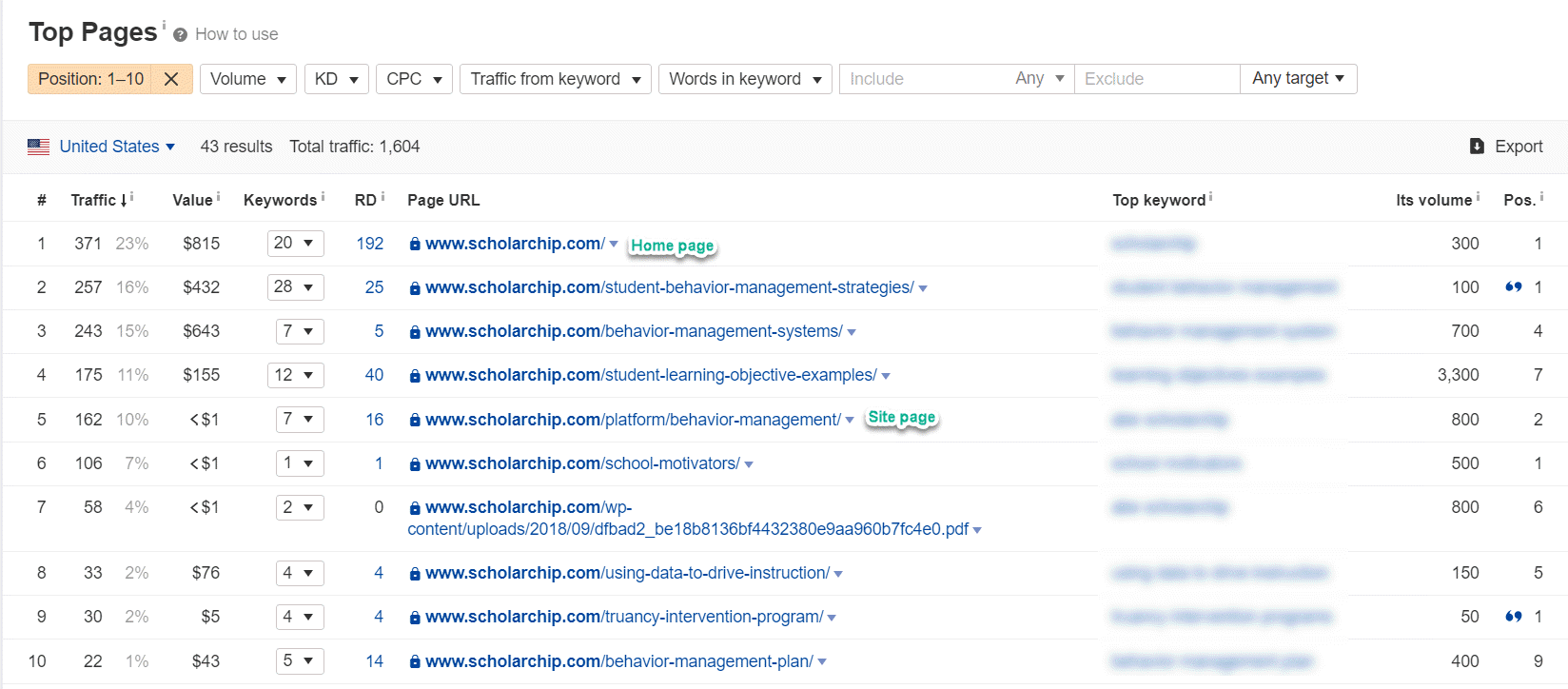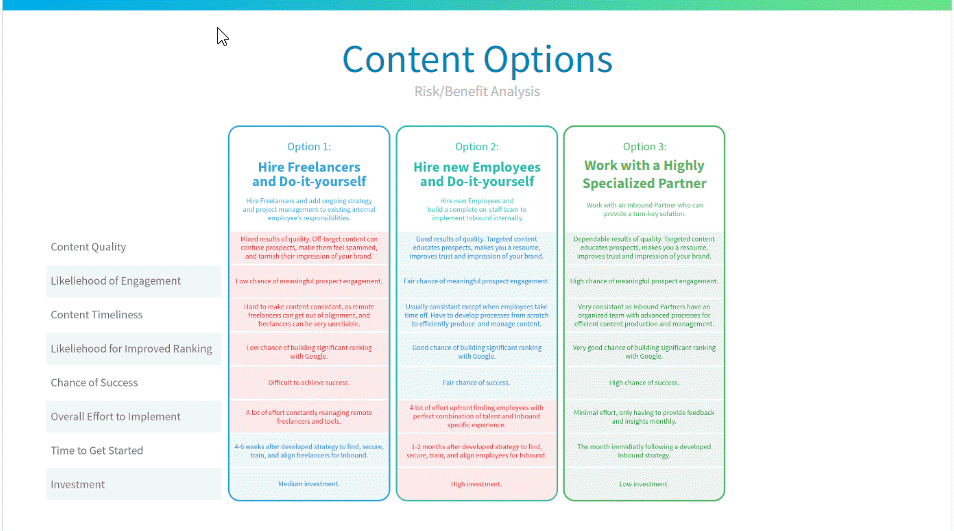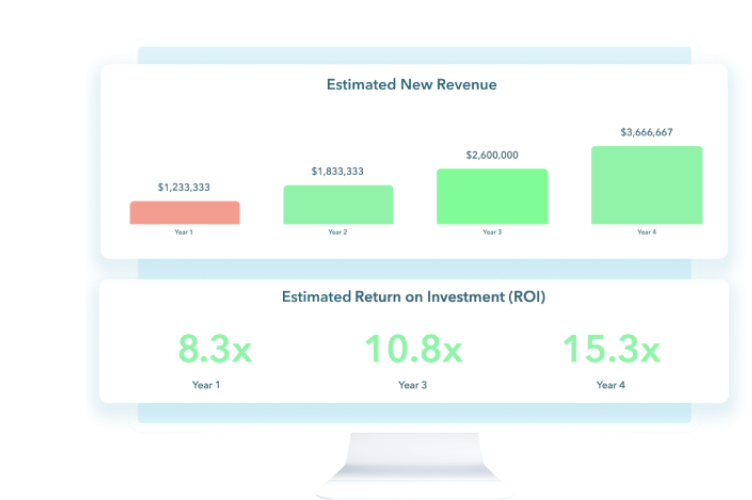 June 27, 2023
June 27, 2023 2706 Views
2706 Views  12 min read
12 min readA business blog is a platform for content marketing where you publish articles, thought-provoking leadership pieces, and educational information about what your company’s products or services solve. Make the mindset change to create content that benefits your ideal customer. It is customer-centric, not company-focused.
A business blog is a long-standing marketing tactic that uses content to increase your business’s online visibility but, more importantly, to engage and inform your audience on topics that are important to them. The overall goal is to educate buyers so they understand what you do, your category, and your product and get the right message to the right audience. Consider it a marketing channel that supports your business growth, like social media or email marketing.
If you’re a business owner or marketing leader and you’re stand-offish or skeptical about the value of a blog because:
a. Think it’s an old, outdated tactic (It’s time to reconsider its value)
b. Consumers buying behavior has evolved—we’re not here to disagree with that statement. However, we’re here to show you how a business blog co-exists with social media, demand gen, etc. (and improves them)
c. You say you don’t have the budget, patience, staff, or time to create content consistently and bailed before you even started. Consider the bigger mistake of not having one at all.
Today’s business buyers are completing more of their buyer’s journey on their own and engaging with multiple pieces of content before connecting with a salesperson. There are a significant amount of blogging stats on this topic, but it’s safe to say:
You now have a few blogging statistics to consider, and if you Google ‘blogging statistics,’ the list is infinite. Additionally, here’s a recap of some benefits before we dig deep into the exact method to create a business blog to inspire your readers to take action. A blog is well worth the investment, but how can it help grow your business?
Here are a few advantages to having a B2B business blog to make you go from skeptic to optimist . . .
Creating a successful blog takes time, strategic content production, and talent. Here’s how to use a proven, cost-effective production process to build your business blog correctly with great B2B content. This isn’t your run-of-the-mill ‘how to create a business blog.’ This is a step-by-step strategic approach to your content marketing through blogging.
Assuming you have a website and niche, this is intended for business leaders ready to up their SEO and content production game.
Contents
Do your competitor research and differentiate yourself
Define your target audience and buyer personas
Set clear goals for each piece with a clear CTA
SEO optimization: Optimize for search engines
Consistently publish quality content
Analyze and double down on what’s working
Business blogging best practices
Consider outsourcing your content creation
Let’s go . . .
Your first step is to discover who the key players are in your space. It will help you understand how to create better content or differentiate yourself from the players. Learning about your business in relation to your competition will broaden your knowledge about your target audience so you can constantly refine your business strategy.
By defining your target audience and buyer personas, you’ll understand their needs, interests, and pain points. This helps create content that resonates with your customers and provides value. When we helped define our client’s target audience, we could tailor their content to keywords we understood their customers would be searching. Here’s what that looked like . . . 
The articles tie in how their product satisfied the search when the key phrase was actually typed into Google.
Are you looking to generate leads, increase brand awareness, establish thought leadership, or drive sales? Setting clear goals will guide your content creation and overall strategy. The typical marketing funnel goes from awareness to consideration to decision/conversion. Depending on your goal will determine if you are going to target audiences looking for information or looking for the solution to their problem.
The top of the funnel gets more traffic but doesn’t always mean higher conversions. Typically bottom of funnel content converts better. However, both stages need a clear call-to-action (CTA.) In order to convert blog traffic into customers, you need actionable CTAs. One way to look at your CTAs’ performance is a glance at your landing page report. You can use a pre-built Google Analytics report to see how many goals or conversion events came from your prospects who originated on landing pages.
The example below shows how many visitors who entered the website via a specific URL completed the goal or converted. We whited out the URL for confidentiality, but you can see how you can define the conversions.
Analyzing your landing pages will help you understand your best performing and explore the CTAs that drove the most conversions and actions. You’re leaving money on the table by not using effective call-to-actions in your marketing . . .
Related resource: 15 Call-to-Action statistics you need to know about to increase your conversion rate.
Here’s where most businesses fall short. Content creation is the planning and optimizing content to meet your predefined goals, as mentioned above. It’s a process that considers content format (blog posts, long-form content, guides, case studies, infographics, videos, etc.) And considers the different buying stages of your consumers. Most companies write on topics they feel are the topics their customers want. (unfortunately, most don’t have the time or team resources to complete the research needed.)
A strong content strategy is vital in developing campaigns with the best topics and keywords associated with the searched topic. A content strategy helps you identify relevant keywords—optimizing your content for search engines within your reach. Here’s a great example of optimizing for industry-specific keywords—one that a person searching the web will likely type when searching for a business like yours. In our case, it could be ‘content marketing,’ ‘content marketing agency,’ or ‘content marketing agency SEO.’ Think of it as what you call your service to attract visitors.
‘Content marketing’ is a high-volume keyword with 27,100 searches and a high keyword difficulty of 91. When typing in ‘content marketing,’ Google’s search results show high domain authority sites like Content Marketing Institute, HubSpot, Semrush, etc. It is much harder to outrank those authorities if you’re not on the same playing field yet. The concept applies to all industries. Digging deeper, we scaled the data to reflect less keyword difficulty and looked for more bottom-of-the-funnel keywords with less competition.
Here you’ll see the search volume is lower, but so is the keyword difficulty.
Keyword research is by far one of the most important steps into SEO-friendly content that converts. Buyer intent keywords come down to knowing what content marketing converts into opportunities. Here’s another way to look at it . . .
Buying intent is a consumer’s likelihood to buy a product or service. The keyword people search for often indicates where they are in their buying intent. Marketers recognize the different buckets when looking at search queries —non-buyer vs. buyer intent. Let’s take a look. Going over to Google, search ‘content marketing.’
The search results are clear that the intent is to learn and find information about content marketing—definition, examples, purpose, etc. (non-buyer intent). The results are meant for content consumption rather than conversion. Heading back over to Google, search ‘content marketing agencies.’ The results are quite different. The search query shows ads, ‘top content marketing agencies 2023’, and ‘Best of’s.’
Your keyword should reflect your goal (get more traffic, build brand awareness, educate and inform or conversions). A well-defined content marketing strategy should account for each stage of your consumers’ buying journey. At Responsify, we have an app that maximizes the impact of your content once the topics and keywords are determined.
Optimize your web pages by incorporating your target keywords naturally into your content and in strategic locations such as the page title, headings, URL, and meta descriptions. If you use WordPress, Yoast helps you with your website’s search engine optimization. It lets you know if you are fully optimized before you hit publish. It detects any problems or improvements you need to make. For example, if you have enough:
Regularly updating your blog with high-quality content establishes your business as a reliable source of information. The key here is to stay updated on your niche, educate your readers on the latest trends, and provide fresh insights. Regularly publishing high-quality content helps attract and retain your audience and improves online visibility and credibility over time. According to McKinsey & Company, the three Cs of customer satisfaction are consistency, consistency, and consistency. ‘Consistency is the secret ingredient to making customers happy.’
“Consistent, high-quality, and engaging content impacts audience decision-making more than any other technique.”
Content syndication is still a tactic many businesses use to maximize their content’s reach cost-efficiently. Research from Demand Gen showed that 30% of B2B companies find content syndication one of their most successful lead generation tactics. It helps B2B marketers connect with new audiences, guide their prospects through the sales funnel, and hasten business growth by providing the right content in front of the right audience at the right time. Republishing the same piece of content, a blog post, for instance, on different websites helps give fresh content to their readers.
Typically, publications will mark syndicated articles with the text: “This article appeared in [Original publication + Link] and has been published here with permission.” [source] Content syndication can be free or paid, contributes to your marketing strategy, and helps build a successful business blog. There are different options to explore:
1. Co-marketing (Unpaid): when two companies collaborate on promotional efforts for a co-branded offer. Any leads are shared between the two companies.
2. Paid article syndication: sites like Outbrain, Medium, and Taboola Michael Brenner, CEO and Founder of Marketing Insider Group, wrote a relevant article on Why Content Syndication is Part of an Effective Content Marketing Strategy. It details what it is and does and different methods and networks to check out.
Your content on your blog should be easy to read, digestible, add a ton of value, and speaks to your audience. If you’re a brand churning out content that doesn’t add value to your audience, you’ll never capture their attention, and your sales will lie flat. You need to determine if your content produces results or if a change is necessary. Content analysis can help double your content’s performance.
Qualitative elements to look for:
Quantitative metrics: to help identify your high-converting content
Google Analytics is a great tool to track and measure SEO metrics:
User behavior metrics:
Sales metrics:
Engagement metrics:
We also like to analyze top-page performance with associated top keywords and SERP ranking. You can use tools like Ahrefs or Semrush. Identify your posts with high SEO potential to rank in the top 10. Updating and reusing content can be one of the most efficient marketing tactics. Assess each piece of content with your goals and decide to keep, update, or delete.
A blog educates your target audience and gets your business discovered by search engines. A handful of features stand out to achieve success with blogging:
1. High-quality featured images The featured image grabs your audience’s attention, and using relevant images throughout your article helps break up the blog content.
2. Use legible text/fonts across all devices Too small of a font will create a poor reading experience.
3. Fast website load time
4. Include social share buttons
5. Have related posts . . .
Now that your blog design is optimized, you want your writing to stand out with a few key elements:
Blogging and content creation are challenging tasks but essential to inbound marketing. And if you stay the course, your business will reap the benefits—traffic, leads, sales, and ROI. Let’s think about the content options you do have:
✅Option #1: Hire freelancers and do-it-yourself
✅Option #2: Hire new employees and do-it-yourself
✅Option #3: Work with a highly specialized partner Which of these options do you think works best for you?
We summarized the 3 options . . .

Option #1 Hire freelancers and do-it-yourself You can hire freelancers and add ongoing strategy and project management to existing internal employees’ responsibilities. However, there are a few things you want to avoid:
Option #2: Hire new employees and do-it-yourself You can hire new employees and build a complete on-staff team to implement Inbound internally. However, there are a few things you want to avoid:
Option #3: Work with a highly specialized partner Work with an Inbound Partner who can provide a turn-key solution. Marketers have a lot of responsibilities across multiple channels. This makes it increasingly more work for them to implement growth content effectively. Content outsourcing can become a great resource and partnership. Implementing growth content requires diverse talent and resources; finding the right B2B content creation partner will keep everything running in sync and on time. Your new resource or content partner should have a skilled team in all aspects of production . . .
From:
When done correctly, content marketing and building your blog requires a significant initial expenditure of time and resources, from strategy and ideation to drafting, publishing, distribution, and measurement.
Responsify helps B2B organizations grow by creating educational and engaging content for their audience to drive traffic, generate leads faster, and rank higher. With Responsify, you’ll immediately have an entire team of dependable and cost-effective talent at your fingertips. We’d love to understand your challenges and help you explore new opportunities. Get a free assessment and learn what you can do to boost traffic, leads, and sales today.
Also Read – Blog Marketing: How to Increase Sales, Build Your Brand, Get Results
